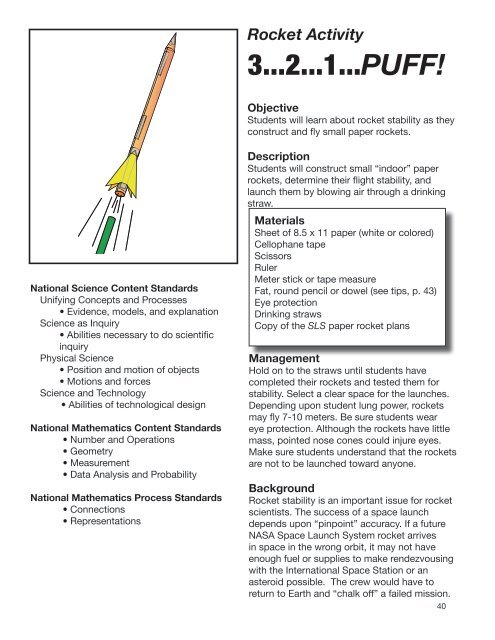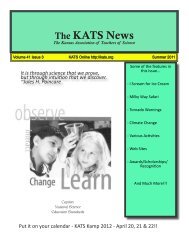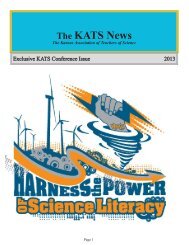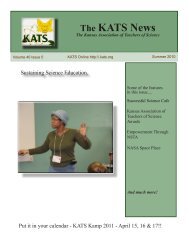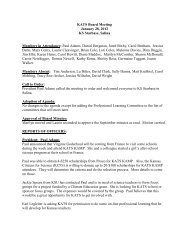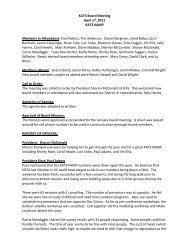Create successful ePaper yourself
Turn your PDF publications into a flip-book with our unique Google optimized e-Paper software.
National Science Content Standards<br />
Unifying Concepts and Processes<br />
• Evidence, models, and explanation<br />
Science as Inquiry<br />
• Abilities necessary to do scientific<br />
inquiry<br />
Physical Science<br />
• Position and motion of objects<br />
• Motions and forces<br />
Science and Technology<br />
• Abilities of technological design<br />
National Mathematics Content Standards<br />
• Number and Operations<br />
• Geometry<br />
• Measurement<br />
• Data Analysis and Probability<br />
National Mathematics Process Standards<br />
• Connections<br />
• Representations<br />
Rocket Activity<br />
3...2...1...PUFF!<br />
Objective<br />
Students will learn about <strong>rocket</strong> stability as they<br />
construct and fly small paper <strong>rocket</strong>s.<br />
Description<br />
Students will construct small “indoor” paper<br />
<strong>rocket</strong>s, determine their flight stability, and<br />
launch them by blowing air through a drinking<br />
straw.<br />
Materials<br />
Sheet of 8.5 x 11 paper (white or colored)<br />
Cellophane tape<br />
Scissors<br />
Ruler<br />
Meter stick or tape measure<br />
Fat, round pencil or dowel (see tips, p. 43)<br />
Eye protection<br />
Drinking straws<br />
Copy of the SLS paper <strong>rocket</strong> plans<br />
Management<br />
Hold on to the straws until students have<br />
completed their <strong>rocket</strong>s and tested them for<br />
stability. Select a clear space for the launches.<br />
Depending upon student lung power, <strong>rocket</strong>s<br />
may fly 7-10 meters. Be sure students wear<br />
eye protection. Although the <strong>rocket</strong>s have little<br />
mass, pointed nose cones could injure eyes.<br />
Make sure students understand that the <strong>rocket</strong>s<br />
are not to be launched toward anyone.<br />
Background<br />
Rocket stability is an important issue for <strong>rocket</strong><br />
scientists. The success of a space launch<br />
depends upon “pinpoint” accuracy. If a future<br />
NASA Space Launch System <strong>rocket</strong> arrives<br />
in space in the wrong orbit, it may not have<br />
enough fuel or supplies to make rendezvousing<br />
with the International Space Station or an<br />
asteroid possible. The crew would have to<br />
return to Earth and “chalk off” a failed mission.<br />
40


